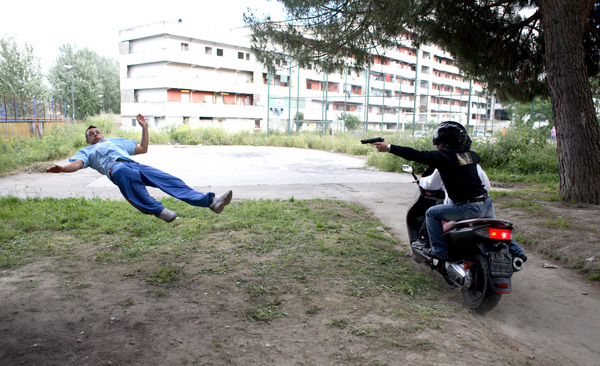|
Reviews of Recent Independent, Foreign, & Documentary Films in Theaters and DVD/Home Video

GOMORRAH
After watching Gomorrah, you’re likely never to
have much of a vicarious thrill watching a movie mob hit again.
Actually, considering the reach of the Neapolitan crime network—or Camorra as it
is locally referred—the glamorous lure of crime films should be the
least of one’s concerns. Bleak, brutal, and raw, Gomorrah is told in a matter-of-fact
yet intense manner that in no way fetishizes gangland crime, as is the
case with many movies and the Sicilian Mafia. Perhaps it’s due to the immigrant
saga and the pursuit of the American Dream, but the
Sicilian Mafia has gotten some very good mileage out of Hollywood. These
films, as violent as they may be, usually include a code of honor,
which makes the movies more palatable. With the Camorra—Gomorrah is a convenient and appropriate
variation—rules are always changing, and loyalty to someone one day can
get you killed the next. Not to say there aren’t a few sympathetic characters. Don Ciro (Gianfelice Imparato) delivers money to clan families who live (imprisoned behind closed doors and shutters is more like it) in a Dante-esque tenement. Walking the corridors of this concrete hell, there is a visceral and persistent sense of danger. Late in the movie, the low-level middleman tries to make a deal with a member of the opposing clan, only to be told he would have to buy his life in order to switch. Young Roberto (Carmine Paternoster), just out of school, works for Franco (Toni Servillo), a corrupt, if nattily dressed, head of a waste disposal company that dumps toxic material into makeshift landfills. The horrifying irony that Franco is poisoning the same land where he lives in is hardly lost on him. In Gomorrah, there is no morality tale to be learned. Wealth and power are all that count as long as you are still breathing; anything else is weakness.
With a hand-held camera often lagging behind the
characters, scenes have a loose rhythm (no rat-tat-tat editing here) so
that when violence strikes, it’s a shock. As the director explained to
the press, he wanted his audience to feel like it was watching something
it witnessed as a passer-by. (There is actually relatively little
physical violence; most difficult to watch are most of the characters’
utter lack of humanity for each other.) But director Matteo Garrone is
not a distant observer. His overall tone may be
dispassionate, but the film is clearly a shout of anger.
Adam Schartoff
|

